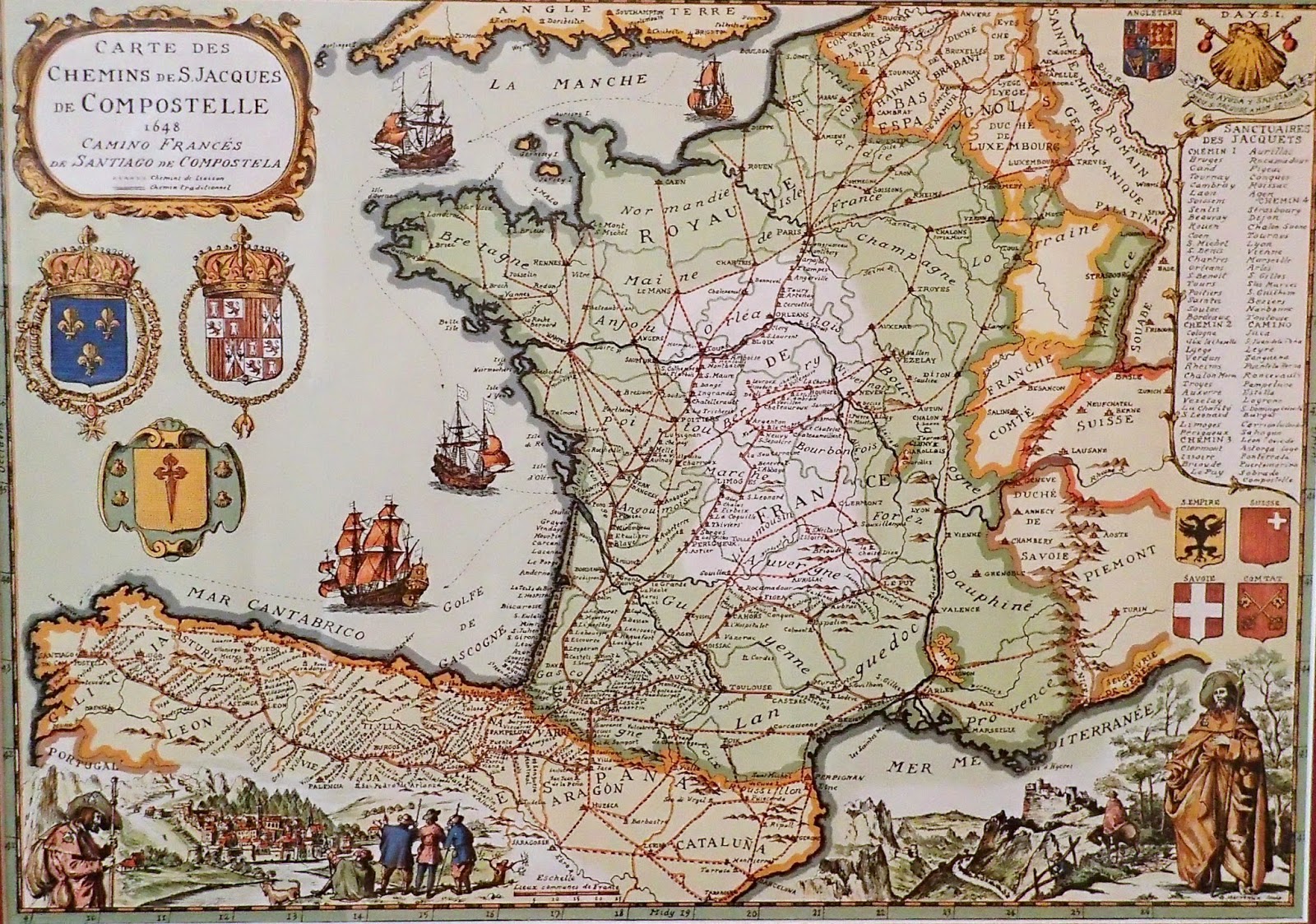The photo above of a print on my wall that was purchased at Mount St. Michelle in 2004.
This is a route that preChristian Europeans used to cross northern Spain to what they thought was the end of the world - Finisterra. Around 800 AD a hermit found what he claimed to be remains of the disciple James in a forest where now stands the city of Santiago de Compostel. This excited the Christians of Europe to no end and over the ensuing centuries thousands upon thousands travelled to Santiago de Compostela to see this in person. Cathedrals were built as well as the infrastructure (hostels, bridges, etc) to support this stream of travellers. The most widely followed route became known as the Camino Frances which started in Saint Jean Pied-de-Port in the French Pyrenees, the collection point for various routes throughout Europe, and follows a westerly route for approximately 800 km to Santiago. After the Black Death and wars of the middle ages the popularity of the Camino simmered down but never really disappeared. By the last decades of the twentieth century this pilgrimage began to regain popularity for both spiritual/religious as well as recreational/tourist reasons. Recent years have seen some days with over one thousand pilgrims per day arriving at Santiago!
http://en.wikipedia.org/wiki/Way_of_St._James
The modern day pilgrim travels this route by foot, bicycle or horseback. Stamps are collected in a small book called a Credential at various points along The Way as proof of completion. With a minimum distance of 100 km for walker and 100 km for cyclists to Santiago the pilgrim may present this credential to at the cathedral of Santigo and receive a document call a Compostela.
 |
| My stamped credential and other souvenirs from 2010 |
The scallop shell is the a common symbol seen frequently on signs, etc. along the Camino. The shell is considered a metaphor where the grooves meet at a central point representing the various travel routes converging on Santiago de Compostela. Also, Pilgrims of the the middle ages would display the scallop shell souvenir as proof they have indeed reached the sea because unlike their modern counterpart, these folks walked both ways. Story has it they also used the scallop shell for an eating bowl and to dip drinking water from streams. Practical folks.



No comments:
Post a Comment